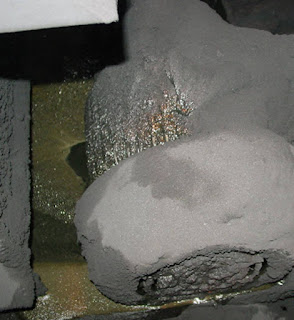2012 has been a very interesting year. We have seen increased national focus on manufacturing and some additional focus on engineering as well. We have seen some industries began to gain strength and production demand while others are not so patiently waiting for their own increase.
From an asset management standpoint, efforts continue to increase as the new ISO 55000 standards gets closer to reality. You should see more and more discussion on this topic in the new year. I will feature some here at ReliabilityNow.com
In general reliability improvement efforts seem to be stable and possibly showing the beginnings of increased focus for next year. Many industries are hesitant to dive in until the beginning of the year when "things will be clearer." If you are trying to get your organization to move forward you may hear many excuses for the delay but they tend to fall into two categories. Below I have listed the two and a few simple thoughts on how best to help each group pull the trigger on reliability.
Group 1. We are too busy to take on reliability at the moment...
Goal you create: More uptime through reliability
For these folks I would suggest that you might want to help them to see all of the production losses they are facing and showing them how to support the reliability improvements efforts without affecting current production demands. One way to do this is through a reduction in non value added activities and the associated downtime. One example would be having a small group eliminate non value adding preventive maintenance task. This effort will increase uptime of the equipment by reducing the downtime required for PM activities and free up resources to work on other improvement task by reducing the maintenance work load. The site might use the freed up labor to work with planners and improve job plans and incorporate precision maintenance. This would eliminate more maintenance downtime and build the improvements. By the end of the year these sites should be making more product and more profit because of their reliability improvements.
Challenge: This group may try to delay the improvement for tomorrow because they are just too busy making the production for today. You have to break that cycle by creating a burning platform and a reason for change.
Group 2. We are not busy enough to take on reliability at the moment...
Goal you create: Lower manufacturing cost through reliability
Interestingly, the tactics here are similar to the previous group in that we want to reduce non value added task but the goal is completely different. This time we don't always want more production since the demand is low but we want to produce what we need at the lowest cost possible. This can be the perfect time to attack long standing reliability issues because the work can be done at a much lower cost by planning it out and scheduling it using the down time provided by lower demand. Since production downtime cost is the biggest part of the spend for many improvements this makes it easier to do during a slowdown. Now we need to free up money and labor to pay for the reliability improvements and one way that we can do that is through refining your equipment maintenance plans to remove unnecessary part expense and labor cost. The quickest way can be a combination of RCM and PM review and RCA done to prevent failures, stop re-occurrence and remove any item that does not address a known and likely failure mode. By reducing activity for activities sake you reduce material cost and contractor cost while also reducing infant mortality.
Challenge: In this group the fear of failure is high due to economic pressures and this fear can stop the organization from being able to make the changes that lead to the improvements. Master the elements of change management to ease the transition.
Now there are many other ways to go about addressing both of these situations but they are both situation specific and a function of the sites maturity. You may even find that both of these situations exist in your site. Feel free to reach out and we can discuss your specific details and craft a plan directed at your needs.
I wish you a great year of reliability in 2013 and I challenge you to attack unreliability in 2013 where it lives, in the minds of your organization. Create Desire, Educate, Apply, Sustain!




